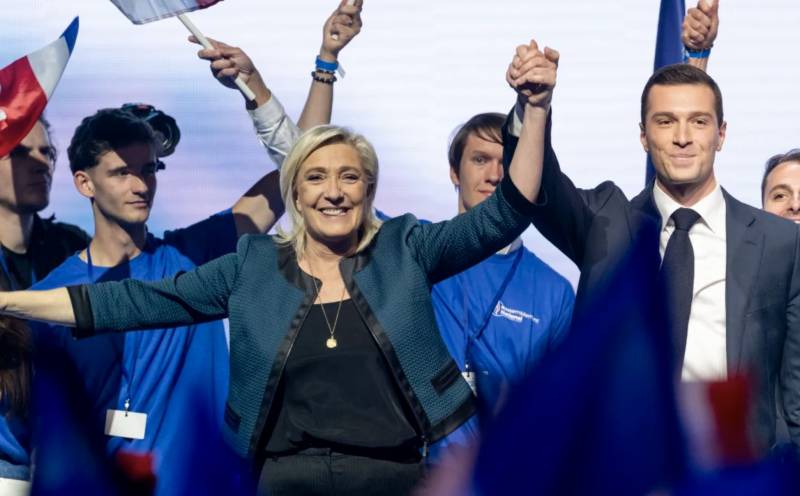
French President Emmanuel Macron’s snap election announcement, which was already seen as a reckless gamble that could bring the far-right to power, has backfired.
The first round of France’s snap election led Marine Le Pen’s far-right National Rally (RN) surging ahead, winning 33.25% of the vote along with its allies. The leftist New Popular Front (NFP) won 28.63% and President Emmanuel Macron’s Ensemble coalition stood third with 20.94% of the vote.
There are 577 seats in France’s National Assembly, with 289 seats needed for an absolute majority.
Are the left and centrist coalitions going to unite?
Well, sort of. After informal talks, a large number of candidates – nearly 218 by one estimate from Le Monde - from both Macron’s centrist coalition and the left-wing coalition have stepped down from the second round, in an attempt to block the far-right National Rally by uniting behind the contender with the best chance of beating Le Pen’s far-right nationalists.
Prime Minister Gabriel Attal said on Sunday that third-placed candidates should step aside: “not a single vote must go to the National Rally.”
The centrist and left coalition are aiming for the hastily assembled “republican front” to defeat the RN in the second round later this week.
The number of three-way races in the second round has been brought down to only 108, from the 300 that were expected after the first round’s results came in. 130 candidates from the left-wing New Popular Front, out of a total of 446 who qualified for the second round, and 81 candidates from Macron’s coalition, out of 319 who qualified, have withdrawn from the polls.
What does this mean for the National Rally’s chances?
The chances of an outright victory for the National Rally have undoubtedly fallen as the other parties have reluctantly banded together to stop the far-right nationalist RN from taking power. With 218 candidates withdrawing from the polls, voters opposing the far-right are likely to band behind a single viable candidate.
The second round of the snap polls is scheduled for July 7, on Sunday, and if the center and left’s attempts to unite to avoid splitting the vote succeed, the National Rally might not have the numbers needed to form a simple majority.
Projections put the RN’s tally at anywhere from 230 to 310.
The far-right party’s popularity has been buoyed by the high cost of living in France, compounded by concerns over immigration, and in part by Le Pen working to clean up the party’s image, traditionally known for racism and antisemitism.
How does France’s electoral system work?
France does not have a proportional representation system, but there are two rounds of voting across the 577 constituencies, which includes 13 overseas districts and 11 constituencies that represent French citizens abroad.
Up to four candidates can qualify for the second round of the election, and after the first round on June 30, 301 of the 577 electoral districts had at least three candidates qualifying for the second round.
What is expected after the second round?
Experts suggest that the likeliest outcome is a hung Parliament, where no party holds the majority. Whoever wins however, Emmanuel Macron has said he will not resign as President.
An outright victory by the National Rally in the second round could lead to a politically contentious three years in French politics, with the National Rally’s far-right government having to cohabitate with Macron.
This would not be unprecedented for French politics; the last time cohabitation happened was from 1997 till 2002, when socialist Lionel Jospin was prime minister under center-right President Jacques Chirac.
The confusion between domestic and foreign and defense policy - where one party heads the state and the other runs the government – that would result from this outcome could however cause serious political deadlock and leave the process of governance hamstrung.
Why is the far-right so popular in France?
Partly because the National Rally’s effort to make its nationalist, anti-immigrant politics more palatable to a wider audience have succeeded. The mainstreaming of the far-right however, has also been driven by the collapse of the French party structure.
The National Rally has been able to infuse its exclusionary politics within broader populist themes such as a cost-of-living crisis, undocumented immigration and pension reforms.
The Fifth Republic system of governance that Charles De Gaulle put in place in 1958 relied on the party structures for the center-right Republicans and the center-left Socialist party. Increasing polarization and the collapse of the traditional parties has accelerated France’s drift to the political extremes.
